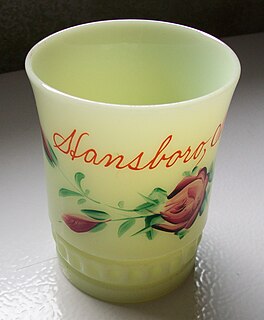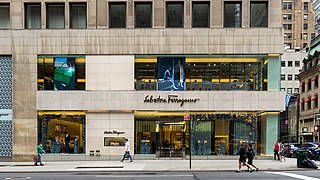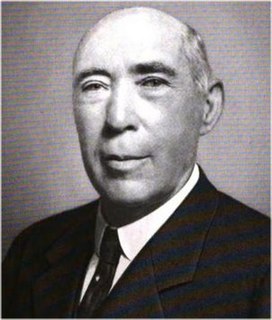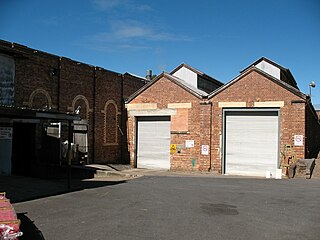
Textile is an umbrella term that includes various fiber-based materials, including fibers, yarns, filaments, threads, different fabric types, etc. At first, the word "textiles" only referred to woven fabrics. However, weaving is not the only manufacturing method, and many other methods were later developed to form textile structures based on their intended use. Knitting and non-woven are other popular types of fabric manufacturing. In the contemporary world, textiles satisfy the material needs for versatile applications, from simple daily clothing to bulletproof jackets, spacesuits, and doctor's gowns.

Felt is a textile material that is produced by matting, condensing and pressing fibers together. Felt can be made of natural fibers such as wool or animal fur, or from synthetic fibers such as petroleum-based acrylic or acrylonitrile or wood pulp–based rayon. Blended fibers are also common. Natural fibre felt has special properties that allow it to be used for a wide variety of purposes. "It is fire-retardant and self-extinguishing; it dampens vibration and absorbs sound; and it can hold large amounts of fluid without feeling wet..."

Blythe is a fashion doll, about 28 cm (11 inch) tall, with an oversized head and large eyes that change color with the pull of a string. It was created in 1972 and was initially only sold for one year in the United States by toy company Kenner. In 2001 the Japanese toy company Takara began producing new editions of Blythe dolls. There is a network of hobbyists who customize the doll for resale and create clothing and shoes for Blythe. Enthusiasts share photographs of their work and other types of dolls on the Internet.

The Lonely Doll is the first children's book in a series by photographer and author Dare Wright. The story is told through text and photographs. It was first published by Doubleday in 1957, went out of print for years, was reissued by Houghton Mifflin in 1998, and brought out by Barnes & Noble in a narrated version for their Nook eReader in 2012. Wright wrote 10 books starring Edith and the bears. The nine that have been reprinted are The Lonely Doll, Edith and Mr. Bear, A Gift from the Lonely Doll, Holiday for Edith and the Bears, The Doll and the Kitten, Edith and the Duckling, Edith and Little Bear Lend a Hand, Edith and Midnight and The Lonely Doll Learns a Lesson.

A Made in USA mark is a country of origin label affixed to homegrown, American-made products that indicates the product is "all or virtually all" domestically produced, manufactured and assembled in the United States of America. The label is regulated by the Federal Trade Commission (FTC).

The Merrow Sewing Machine Company, best known for inventing the overlock sewing machine, is a manufacturer of sewing machines. After the explosion of his gunpowder mill in 1837, in 1838 J.M. Merrow built a knitting mill on the same site. The company developed crocheting machines for its own use and by 1887 evolved to design, build and market sewing machines exclusively. During its early decades it was organized as a partnership under various names: established in 1838 as Joseph M. Merrow & Sons by J. Makens Merrow, then Pitkin, Merrow, & Co., renamed Merrow Manufacturing Co. in 1857, then Merrow and Millard in 1863, J.B. Merrow and Sons in 1870, and incorporated as The Merrow Manufacturing Company in 1893. Originally all of its manufacturing was done at facilities in Merrow, Connecticut, and then in Hartford, Connecticut, after 1894. The company is currently based in Fall River, Massachusetts.

MGA Entertainment Inc. is a manufacturer of children's toys and entertainment products founded in 1979. Its products include, Bratz, L.O.L. Surprise!, Num Noms and Rainbow High. MGA also owns Little Tikes.

Feltex Carpets is a manufacturer of residential and commercial carpets.

G.I. Joe: America's Movable Fighting Man is a line of action figures produced by Hasbro. The initial product offering represented four of the branches of the U.S. armed forces. The term G.I. stands, in popular usage, for Government Issue and became a generic term for U.S. soldiers, especially ground forces. The term originated in WWI, when much of the government-issued equipment was stamped "G.I.", meaning that it was made from galvanized iron. The development of G.I. Joe led to the coining of the term "action figure".

The A.H. Heisey Company was formed in Newark, Ohio, in 1895 by A.H. Heisey. The factory provided fine quality glass tableware and decorative glass figurines. Both pressed and blown glassware were made in a wide variety of patterns and colors. The company also made glass automobile headlights and Holophane Glassware lighting fixtures. The company was operated by Heisey and his sons until 1957, when the factory closed.

Palitoy was a British toy company. It manufactured some of the most popular toys in Britain, some original items and others under licence. Its products included Action Man, Action Girl, Action Force, Tiny Tears, Pippa, Tressy, Mainline Model Railways, Merlin, Star Wars figures, Play-Doh and the Care Bears.

Salvatore Ferragamo S.p.A., commonly known as Ferragamo, is an Italian luxury goods company headquartered in Florence. It specializes in designing and manufacturing footwear and leather goods, which together account for over 86% of its revenue. The remaining products include ready-to-wear, silk products, fashion accessories, and licensed eyewear, watches, and perfumes. It operates 447 mono-brand stores worldwide as of September 2022.

Henry Clay Fry was an American businessman and entrepreneur in the glass industry in the second half of the nineteenth century and first half of the twentieth century. He first organized a large glass manufacturing facility with others that made glass tumbler beverage containers that were sold worldwide. In 1901 he organized with his sons H. C. Fry Glass, a glass manufacturer that had state-of-the-art techniques and made all kinds of glass. In 1916 under an agreement with Corning Glass Works he made heat-resistant glassware. The glass now is a collector's item of historical significance and there is a H. C. Fry Glass Society for the study and preservation of his glass.
Early American molded glass refers to glass functional and decorative objects, such as bottles and dishware, that were manufactured in the United States in the 19th century. The objects were produced by blowing molten glass into a mold, thereby causing the glass to assume the shape and pattern design of the mold. When a plunger rather than blowing is used, as became usual later, the glass is technically called pressed glass. Common blown molded tableware items bearing designs include salt dishes, sugar bowls, creamers, celery stands, decanters, and drinking glasses.
The textile industry in India traditionally, after agriculture, is the only industry that has generated huge employment for both skilled and unskilled labour. The textile industry continues to be the second-largest employment generating sector in India. It offers direct employment to over 35 million people in the country. India is the world's second largest exporter of textiles and clothing, and in the fiscal year 2022, the exports stood at US$ 44.4 billion. According to the Ministry of Textiles, the share of textiles in total exports during April–July 2010 was 11.04%. During 2009–2010, the Indian textile industry was pegged at US$55 billion, 64% of which services domestic demand. In 2010, there were 2,500 textile weaving factories and 4,135 textile finishing factories in all of India. According to AT Kearney’s ‘Retail Apparel Index’, India was ranked as the fourth most promising market for apparel retailers in 2009.

Queensland Woollen Manufacturing Company mill is a heritage-listed mill at 42 & 42B The Terrace, North Ipswich, City of Ipswich, Queensland, Australia. It is also known as Australian Fabric Manufacturers Ltd and Boral Hancock Plywood. It was added to the Queensland Heritage Register on 19 September 2008.

R. John Wright Dolls is an art doll making workshop located in Bennington, Vermont. Established in 1976, R. John Wright Dolls (RJW) is a privately held company founded by R. John Wright.

The Haskell Manufacturing Company was a manufacturing company located at 801 N. Rowe Street, in a building now known as the Haskell Manufacturing Company Building, about a mile north of downtown Ludington, Michigan. Their main product was haskelite, a plywood made from a waterproof glue developed by Henry L. Haskell in the early 1900s. The plywood was veneer wood panels of different thicknesses and was used to make novelty items, furniture, and paneling for construction. The thinner plywood was molded into shapes for body parts of airplanes and transportation vehicles. It was manufactured with different styles and types to fit particular needs.
The American Character Doll Company was an American toy company specializing in dolls. Their most popular dolls included "Tiny Tears," "Tressy," "Butterball Doll", "Sweet Sue," and "Toodles." Founded in 1919, the company's fortunes peaked in the mid-20th century, as they sold millions of dolls exclusively to retailers and mail order houses such as Sears and Montgomery Ward. The company was the first to produce mass-marketed rubber dolls in the United States. American Character Dolls went bankrupt in 1968, with their assets acquired by the Ideal Toy Company.
Indiana Glass Company was an American company that manufactured pressed, blown and hand-molded glassware and tableware for almost 100 years. Predecessors to the company began operations in Dunkirk, Indiana, in 1896 and 1904, when East Central Indiana experienced the Indiana gas boom. The company started in 1907, when a group of investors led by Frank W. Merry formed a company to buy the Dunkirk glass plant that belonged to the bankrupt National Glass Company. National Glass was a trust for glass tableware that originally owned 19 glass factories including the plant in Dunkirk. National Glass went bankrupt in 1907, and its assets were sold in late 1908.
















